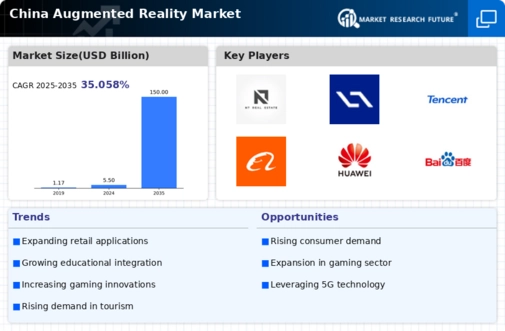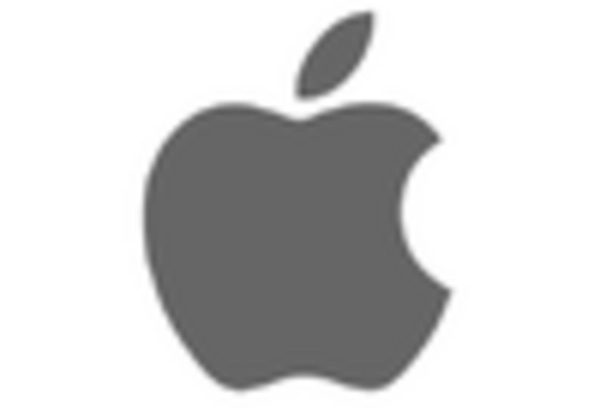Government Support and Initiatives
The augmented reality market in China benefits significantly from government support and initiatives aimed at fostering technological innovation. The Chinese government has implemented various policies to promote the development of AR technologies, including funding for research and development. In 2025, the government allocated approximately $1 billion to support AR startups and projects. This financial backing is expected to accelerate advancements in AR applications across multiple sectors, including healthcare, manufacturing, and retail. Such initiatives not only enhance the technological landscape but also create a favorable environment for the augmented reality market to thrive in China.
Integration with Smart City Initiatives
The augmented reality market in China is increasingly intertwined with smart city initiatives, which aim to enhance urban living through technology. AR applications are being utilized in urban planning, navigation, and public safety, providing citizens with real-time information and interactive experiences. For instance, AR can assist in visualizing infrastructure projects or improving public transport systems. As cities continue to adopt smart technologies, the demand for AR solutions is expected to rise. This integration not only enhances the functionality of urban environments but also positions the augmented reality market as a crucial component of future urban development in China.
Growing Interest in AR for Retail and Marketing
The augmented reality market in China is witnessing a growing interest from retailers and marketers seeking innovative ways to engage consumers. AR technology allows brands to create interactive advertisements and virtual try-on experiences, enhancing customer engagement and satisfaction. In 2025, it is estimated that AR-driven marketing strategies could account for up to 15% of total marketing budgets among leading retailers. This shift towards experiential marketing is likely to drive significant growth in the augmented reality market, as businesses recognize the potential of AR to influence purchasing decisions and enhance brand loyalty.
Rising Consumer Demand for Immersive Experiences
The augmented reality market in China is experiencing a notable surge in consumer demand for immersive experiences. As technology becomes more accessible, consumers are increasingly seeking interactive and engaging content. This trend is particularly evident in sectors such as gaming and entertainment, where AR applications enhance user experiences. According to recent data, the market is projected to grow at a CAGR of approximately 30% over the next five years. This growth is driven by the desire for innovative experiences that blend the digital and physical worlds. Companies are investing heavily in AR technologies to meet this demand, indicating a robust future for the augmented reality market in China.
Advancements in Hardware and Software Technologies
Technological advancements in hardware and software are pivotal drivers of the augmented reality market in China. The continuous evolution of AR devices, such as smart glasses and mobile applications, enhances user experiences and expands the market's reach. In 2025, the introduction of more powerful processors and improved display technologies is expected to increase the functionality of AR applications. Furthermore, software development kits (SDKs) are becoming more sophisticated, allowing developers to create more complex and engaging AR experiences. This technological progress is likely to attract more businesses to invest in the augmented reality market, thereby fostering its growth.

















Leave a Comment